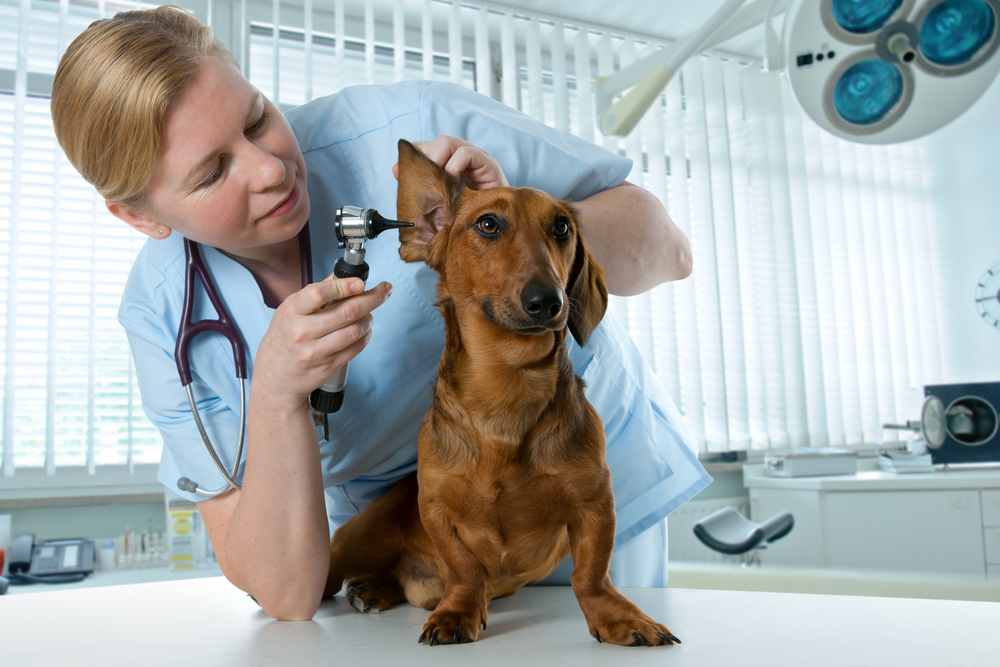

Fever, referred to medically as pyrexia, can be defined as a higher than normal body temperature in dogs. With the normal range falling between 99.5-102.5 Fahrenheit, a body temperature of at least 103.5 ° F (39.7° C) can be considered a fever.
The cause of the fever is not always obvious. An elevated temperature on at least four occasions over a 14-day period without any obvious cause is referred to as a fever of unknown origin (FUO). Otherwise, fever is considered a healthy biological response to a bacterial or viral threat.
Fever is not the disease itself, but a response to the threat of disease. Therefore, it should be remembered that fevers can be beneficial for a sick animal, as it lowers the rapid division of bacteria and enhances the body's immune system response. However, a fever that is too high or goes on for a prolonged period of time needs medical treatment.
Diagnosing the underlying cause can be a daunting task. You will need to provide your veterinarian with a detailed medical history for your dog, including contact with infectious agents, travel history, drug usage, insect bites, recent vaccination, allergies, surgery, and any other previous illnesses, as well as the first onset of the fever. A detailed physical examination will be conducted to identify an underlying disease condition. After the history and physical examination are performed, routine laboratory tests will include a complete blood count, biochemistry profile, and urinalysis. These tests may provide valuable information in identifying any underlying conditions or infections that may be leading to the increased temperature. In case of infections, your veterinarian may also conduct culture and sensitivity testing to identify the specific disease causing organism so that the most suitable drugs can be prescribed to treat it. More specific testing may be required to identify the causative organism.
Radiographic studies may also help in the course of the examination, and may turn up tumors, abscesses, and/or infections. More advanced techniques like ultrasonography, echocardiography, computed tomography (CT) scan, and magnetic resonance imaging (MRI) may be employed for some patients. Other diagnostic tests, such as endoscopy, may be required in some patients if they appear to have an internal infection or obstruction.
Your veterinarian will treat your dog on the basis of the final diagnosis. These patients are rested until fully recovered to save body energy and avoid aggravation of symptoms. In some patients fever may be resolved on the first day of treatment, while in others it may take weeks or months to fully recover. The diagnosis and treatment of fever of unknown origin (FUO) may be expensive, extensive, and invasive. Antibiotics given with fluid therapy is the most common prescribed treatment for patients with fever, but surgery may be required for some patients to remove the source of the infection that is causing the fever. Your veterinarian will decide whether or not to use drugs for lowering your dog's body temperature.
Your dog will need rest and a diet high in nutrition and calories to fully recover. It is normal for the appetite to be affected while the body is feverish. If your dog does not feel well enough to eat solids, you will need to ask your veterinarian to recommend a substitution, such as a high calorie liquid supplement, until your dog does feel well enough to eat normally again.
If your veterinarian prescribes medication, be sure to fully comply with the directions given by your veterinarian, finishing the full course of medication even after the symptoms have abated. Do not give any drugs or medicines to your dog without your veterinarian's approval, as some drugs can be very toxic for dogs.
 Dog Ear Infection - Symptoms and Treatments
Otitis Media and Otitis Interna in Dogs
Oti
Dog Ear Infection - Symptoms and Treatments
Otitis Media and Otitis Interna in Dogs
Oti
 Colonic or Rectal Inflammation in Dogs
Colitis and Proctitis in Dogs
Histiocytic ulcerat
Colonic or Rectal Inflammation in Dogs
Colitis and Proctitis in Dogs
Histiocytic ulcerat
 Stomach and Intestinal Inflammation in Dogs
Eosinophilic Gastroenteritis in Dogs
Eosinophilic
Stomach and Intestinal Inflammation in Dogs
Eosinophilic Gastroenteritis in Dogs
Eosinophilic
 Hernia (Hiatal) in Dogs
Hiatal Hernia
A hernia is most likely to occur in
Hernia (Hiatal) in Dogs
Hiatal Hernia
A hernia is most likely to occur in
 Bleeding Under the Skin of Dogs
Petechia, Ecchymosis, and Bruising in Dogs
Petech
Bleeding Under the Skin of Dogs
Petechia, Ecchymosis, and Bruising in Dogs
Petech
Copyright © 2005-2016 Pet Information All Rights Reserved
Contact us: www162date@outlook.com